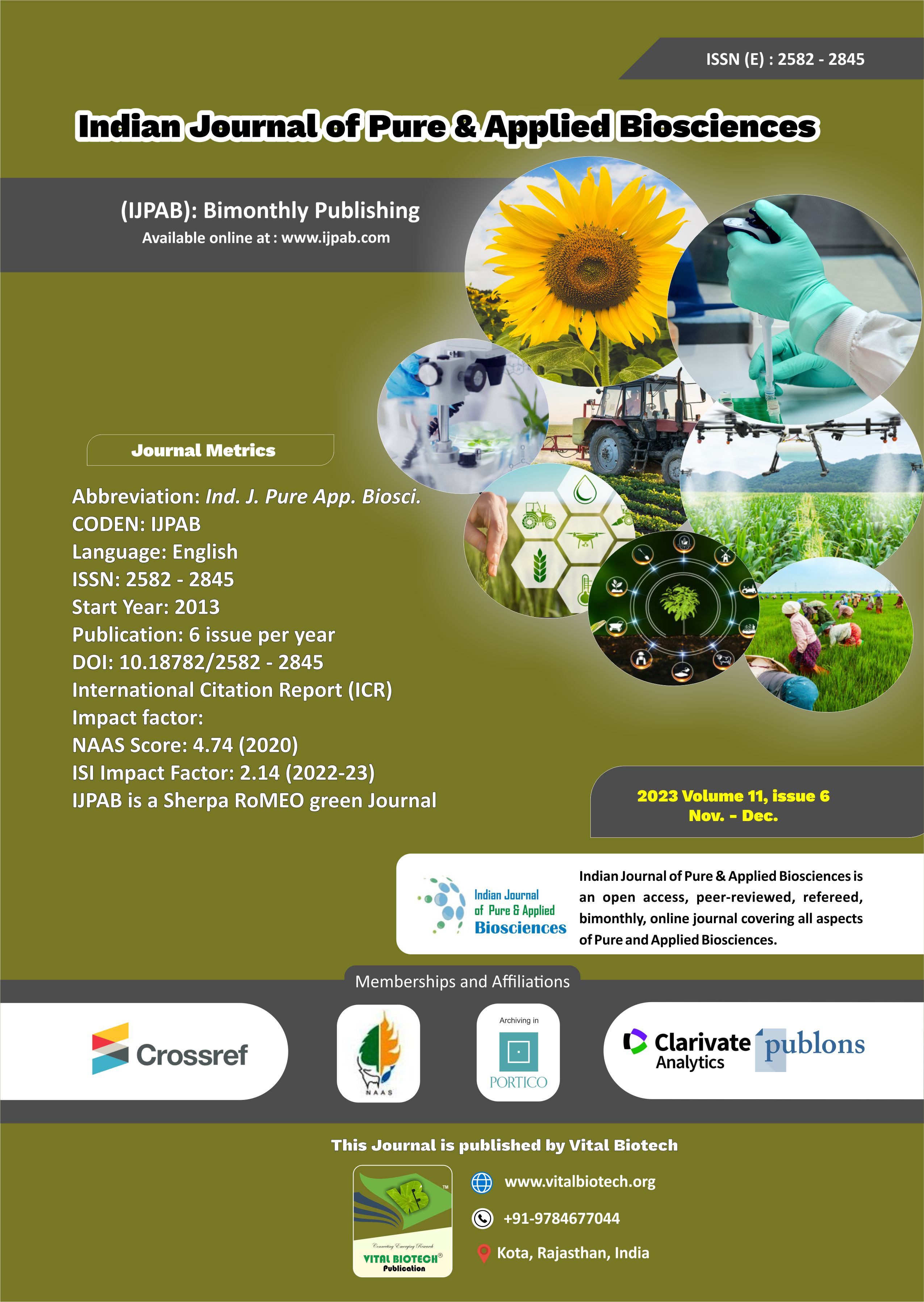-
No. 772, Basant Vihar, Kota
Rajasthan-324009 India
-
Call Us On
+91 9784677044
-
Mail Us @
editor@ijpab.com
Indian Journal of Pure & Applied Biosciences (IJPAB)
Year : 2023, Volume : 11, Issue : 6
First page : (26) Last page : (31)
Article doi: : http://dx.doi.org/10.18782/2582-2845.9032
Adaptability Study of Improved Mung bean (Vigna radiata) Varieties in Moisture Stress areas of Guji Zone, Southern Ethiopia
Belachew Dabalo1* ![]() , Tekalign Afeta2, Deresa Shumi3, Rhobot Neguse4
, Tekalign Afeta2, Deresa Shumi3, Rhobot Neguse4
1Pulse and Oils Research, 2,3,4Crop Protection Research,
Bore Agricultural Research Center, Oromia Agricultural Research Institute, Addis Ababa, Ethiopia
*Corresponding Author E-mail: balexdebelo8@gmail.com
Received: 25.09.2023 | Revised: 29.11.2023 | Accepted: 12.12.2023
ABSTRACT
Mung bean (Vigna radiata L.), a green gram, is the most important short-duration legume crop for moisture-stressed areas globally. Because of the prolonged drought in soil stress areas in Ethiopia, drought-tolerant and early matured with little soil moisture crops are of utmost importance, and mung bean crop production is crucial in the lowland areas of the Guji zone. During the 2020–21 cropping season, a study was carried out at the Bore Agricultural Research Center's research mandate regions to assess the adaptation of mung bean cultivars. In order to assess eight characteristics—namely, days to 50% flowering, seed filling period, 90% physiological maturity, plant height, Number of pods per plant, Number of seeds per pod, seed yield, and hundred seed weight—for five mung bean varieties—Rasa, Shewa robit, NVL, Local, and Chinese—under rain-fed conditions at the Bore Agricultural Research Center on farms in the Guji Zone, a field experiment was set up in a randomized complete block design with three replications. With six rows per plot and a distance of 40 cm between rows and 10 cm between plants, each plot measured 2.4 meters by 4 meters. With the exception of plant height, which is not significantly different among varieties, the analysis of variances showed that Days to 50% blooming, Days to 90%maturity, number of pods per plant, number of seeds per pod, hundred seed weight, and grain output per hectare changed as impacted by variety. The highest grain yield (1014.04kg/ha) was recorded from the Rasa variety, followed by the local cultivar (938. 45kg/ha), whereas the minimum grain yield value (715.67kg/ha) was recorded by the variety NVL. Hence, the variety Rasa was best adapted in the study areas and it will be used for production.
Keywords: early mature crop, legume crop, drought tolerant, seed yield, green gam.
Full Text : PDF; Journal doi : http://dx.doi.org/10.18782
Cite this article: Dabalo, B., Afeta, T., Shumi, D., & Neguse, R. (2023). Adaptability Study of Improved Mung bean (Vigna radiata) Varieties in Moisture Stress areas of Guji Zone, Southern Ethiopia, Ind. J. Pure App. Biosci.11(6), 26-31. doi: http://dx.doi.org/10.18782/2582-2845.9032


